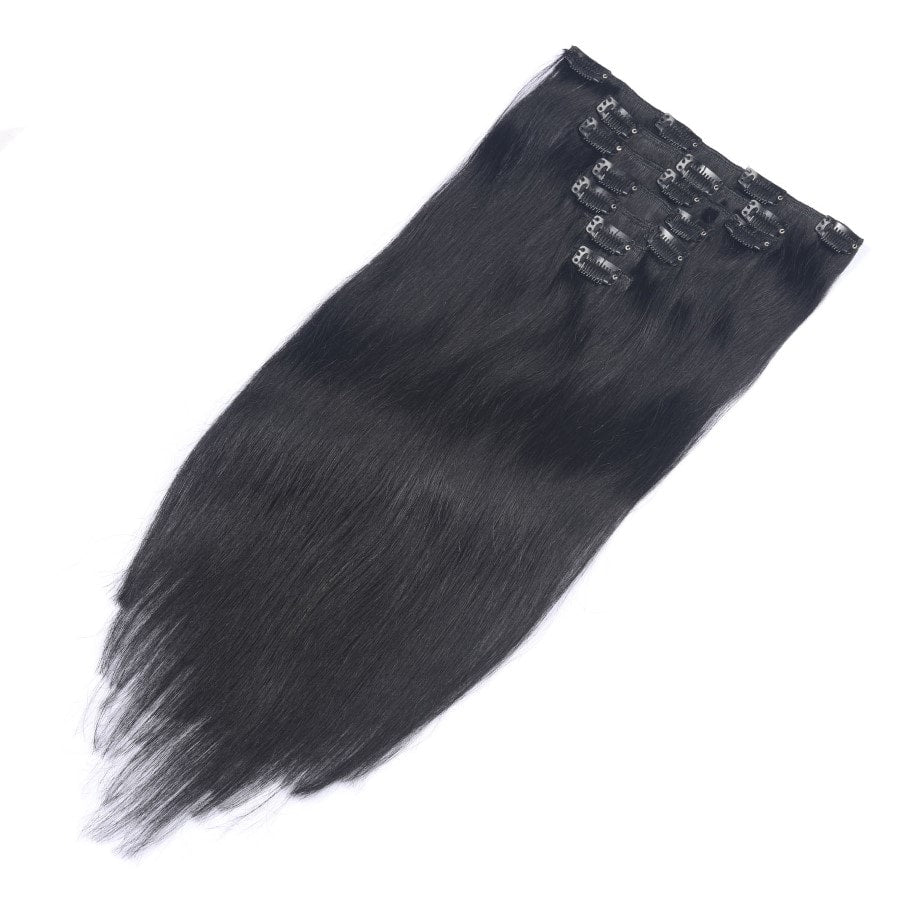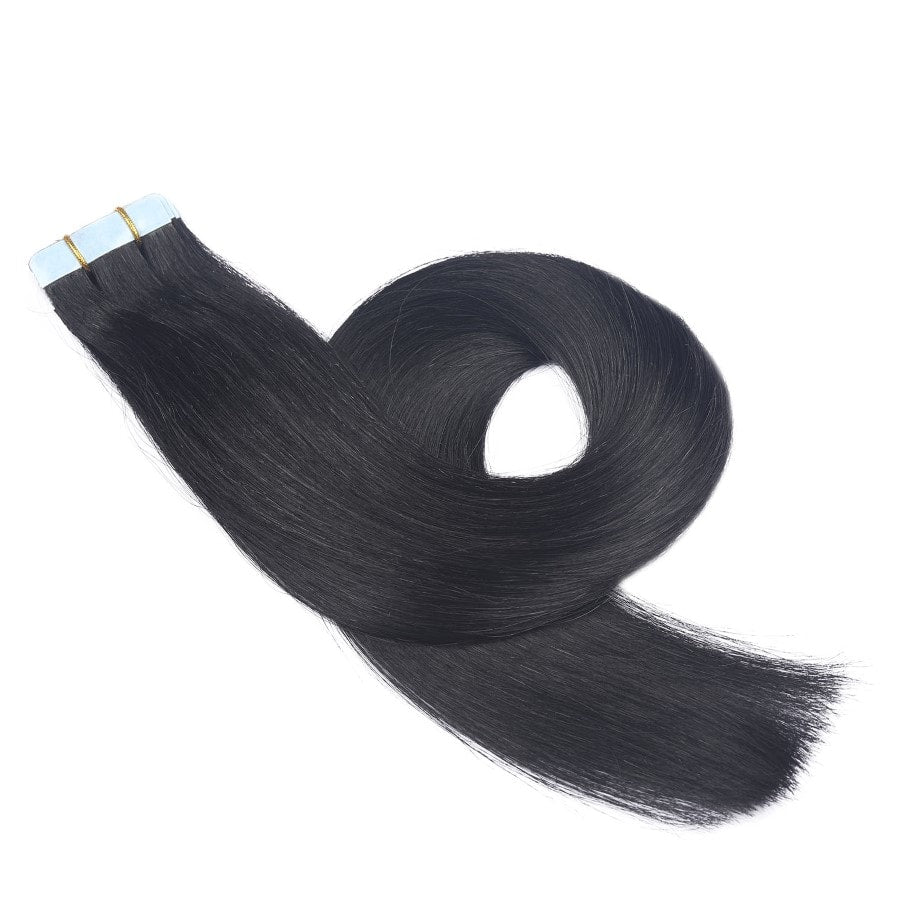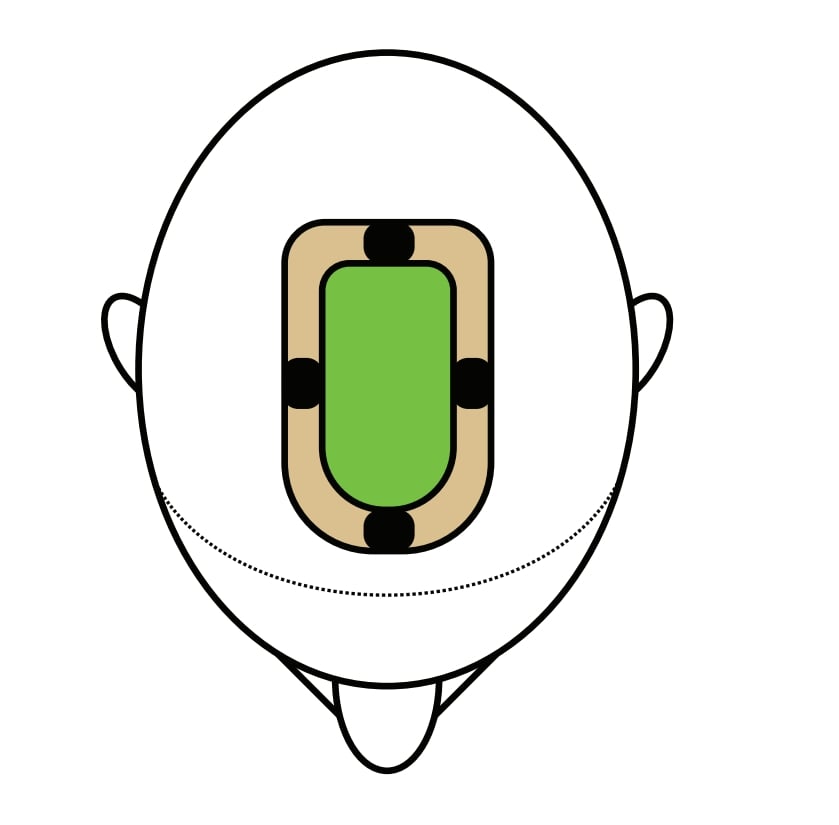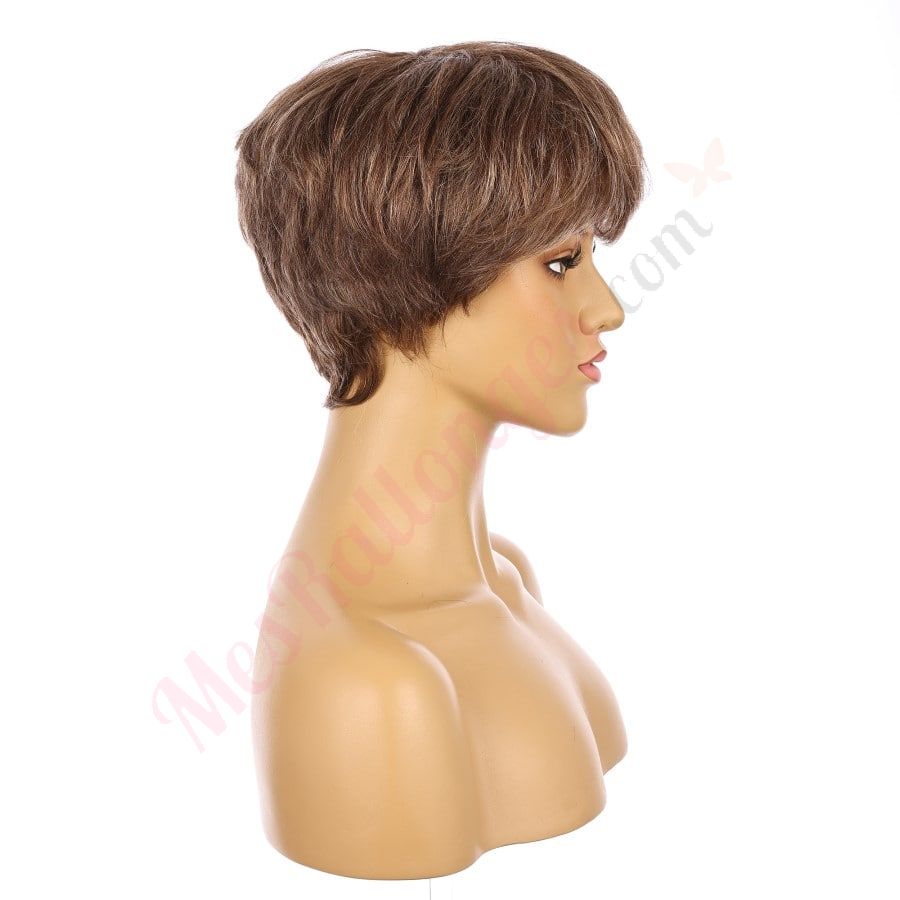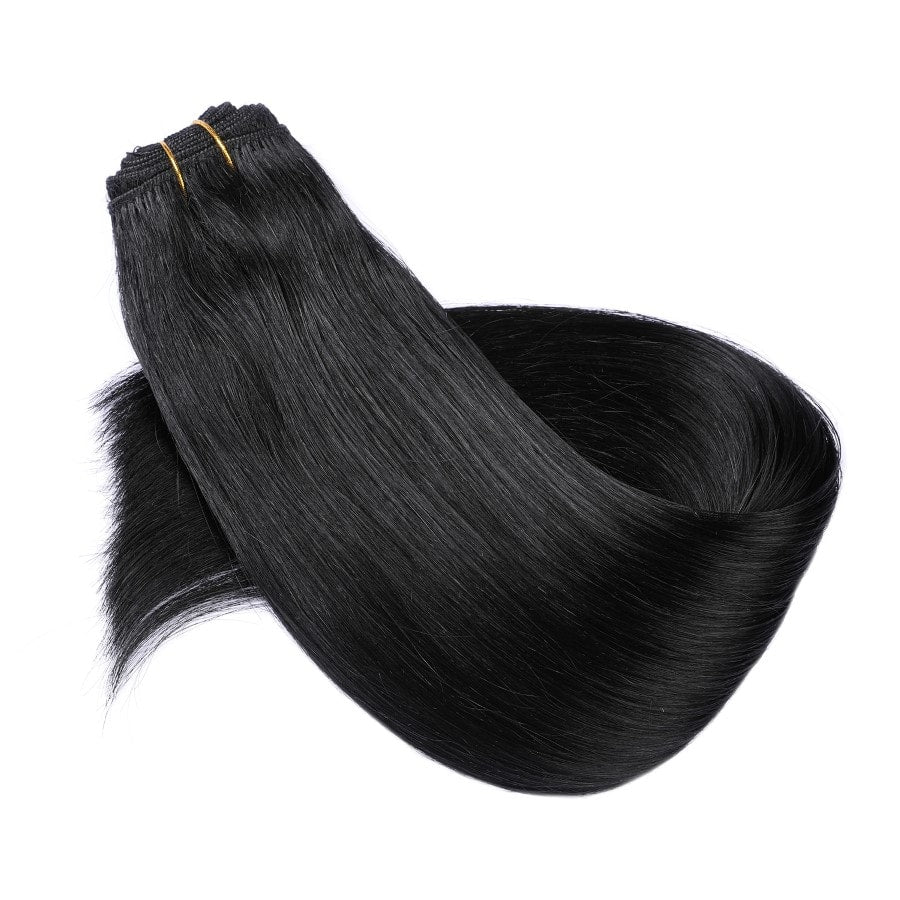Vous êtes-vous déjà demandé pourquoi vos extensions de cheveux tombaient ? Plusieurs raisons peuvent être à l'origine de ce problème ennuyeux. De mauvaises techniques d'installation, l'utilisation de produits capillaires inappropriés et même la façon dont vous entretenez vos extensions peuvent entraîner leur glissement. En abordant ces problèmes courants, nous pouvons vous aider à garantir que vos extensions restent en place, améliorant ainsi votre apparence et renforçant votre confiance.
L'une des principales raisons pour lesquelles les extensions de cheveux tombent est une mauvaise installation. Si les extensions ne sont pas fixées correctement, elles risquent davantage de glisser. L'utilisation de produits lourds ou d'un brossage agressif peut également affaiblir les liaisons, provoquant la chute des extensions. Nous devons faire très attention lorsque nous manipulons nos extensions pour éviter de stresser inutilement nos cheveux naturels.
Il est également essentiel de prendre en compte nos habitudes de vie : la fréquence à laquelle nous lavons nos cheveux, le type de shampoing et d'après-shampoing que nous utilisons et même la fréquence à laquelle nous attachons nos cheveux peuvent avoir un impact sur la longévité de nos extensions. Avec les bonnes techniques et les bons produits, nous pouvons maintenir nos extensions plus longtemps et gardez-les magnifiques.
Principaux points à retenir
- Une mauvaise installation et des produits lourds sont les principales causes de glissement des extensions de cheveux.
- Un entretien et une manipulation appropriés sont essentiels pour entretenir les extensions de cheveux.
- Les habitudes de vie affectent considérablement la longévité des extensions.
Comprendre les extensions de cheveux
Les extensions de cheveux sont un excellent moyen d'ajouter de la longueur, du volume et du style à nos cheveux. Découvrons les différents types d'extensions et leur fonctionnement.
Types d'extensions de cheveux
Il existe différents types d’extensions de cheveux parmi lesquels nous pouvons choisir, chacun avec ses avantages uniques. Clips-ins sont populaires pour leur facilité d’utilisation : nous pouvons les fixer et les retirer nous-mêmes à la maison. Extensions à bandes adhésives impliquent des sections de cheveux attachées à du ruban adhésif, qui est ensuite pressé sur nos cheveux naturels. Ceux-ci sont connus pour leur aspect sans couture .
Micro anneaux et anneaux nano Les extensions de cheveux sont une autre option intéressante, où de petits anneaux métalliques sont utilisés pour attacher les extensions. Ils sont doux pour nos cheveux naturels, réduisant ainsi le risque de dommages.
Liaisons de fusion sont une méthode plus durable. Ici, les extensions sont collées à nos cheveux naturels à l'aide d'un outil chauffant. Les liaisons par fusion sont durables et peuvent durer plusieurs mois. Chaque type répond à des besoins et à des modes de vie différents, offrant une flexibilité pour nos objectifs capillaires.
Comment fonctionnent les extensions de cheveux
Les extensions de cheveux ajoutent des mèches de cheveux à nos cheveux naturels pour en augmenter la longueur et le volume. La façon dont elles sont appliquées peut varier. Clips-ins sont temporaire et peuvent être mis en place et retirés rapidement, ce qui les rend parfaits pour une soirée ou une occasion spéciale. Extensions à bandes adhésives se composent d'une petite bande de cheveux attachée à une bande collante, qui prend en sandwich des sections de nos cheveux naturels.
Pour Les micro-anneaux , petits anneaux métalliques, permettent de fixer les extensions sans chaleur ni colle. Ils sont fixés solidement mais peuvent être ajustés si nécessaire.
Les nano-anneaux , encore plus petits que les micro-anneaux, offrent une application similaire mais sont moins visibles. Liaisons de fusion Utilisez un liant à base de kératine, fondu avec un outil chaud, pour fixer solidement les extensions. Cette méthode est très durable mais nécessite des visites en salon pour l'application et le retrait. Chaque type fonctionne différemment pour se fondre parfaitement avec nos cheveux naturels, nous donnant l'apparence plus volumineuse et plus longue que nous désirons.
Raisons courantes pour lesquelles les extensions ne sont pas disponibles
Nous nous demandons souvent pourquoi nos extensions de cheveux ne tiennent pas en place. Il peut y avoir plusieurs raisons à cela, allant d'erreurs dans la façon dont elles ont été appliquées à l'accumulation d'huiles et de produits naturels, voire à nos activités quotidiennes.
Erreurs dans le processus de candidature
L’une des principales raisons les extensions glissent est une mauvaise application. Si la colle n'est pas utilisée correctement, la liaison ne tiendra pas. Nous devons toujours éliminer tous les résidus de colle et nous assurer que le nouvel adhésif puisse coller correctement. Sauter cette étape peut entraîner le glissement des extensions de cheveux.
De plus, les extensions risquent de ne pas rester en place si les sections de cheveux utilisées sont trop grandes ou trop petites. Chaque section doit avoir la taille adéquate pour maintenir fermement l'extension.
Effets de l'accumulation d'huile naturelle et de produits
Notre cuir chevelu produit des huiles naturelles qui peuvent affaiblir l'adhésif qui maintient nos extensions. nous ne nettoyons pas régulièrement nos cheveux, cette accumulation peut provoquer des glissades.
L’utilisation de trop de produits, comme des après-shampooings et des gels coiffants, peut également aggraver le problème. L'accumulation rend les liaisons glissantes, ce qui affecte la façon dont les extensions restent en place.
Impact du mode de vie et des activités
Un mode de vie actif peut également être à l'origine de ce problème. Lorsque nous pratiquons des activités telles que l'exercice physique, la transpiration et la natation, nos cheveux deviennent humides et gras. Cela peut rendre difficile le maintien ferme des extensions.
Porter des chapeaux serrés ou attacher nos cheveux dans des styles serrés peut exercer une pression supplémentaire sur les extensions, les faisant bouger ou glisser.
Prendre soin de ses extensions de cheveux et s'assurer qu'elles sont correctement appliquées peut contribuer à les maintenir en place plus longtemps. Prendre soin de ses cheveux et de ses extensions peut faire une grande différence !
Techniques d'installation appropriées
Il est essentiel de suivre les techniques appropriées pour garder nos extensions de cheveux en sécurité et longue durée . Préparation de nos cheveux naturels et fixer solidement les extensions sont des étapes cruciales.
Préparation de vos cheveux naturels
Tout d'abord, il faut commencer avec des cheveux propres et secs. Lavez-les soigneusement avec un shampoing et un après-shampoing, en évitant les produits lourds qui pourraient laisser des résidus. Séchez complètement vos cheveux, car l'humidité peut affecter la force de l'adhésif.
Ensuite, nous devrions section nos cheveux. Cela nous aide à travailler en petites sections faciles à coiffer. Un peigne à dents fines est utile pour créer des sections régulières. Attachez chaque section pour la maintenir à l'écart jusqu'à ce que nous soyons prêts à fixer l'extension.
Garniture les extrémités de nos cheveux peuvent également aider. Les pointes fourchues ou inégales peuvent affecter la façon dont les extensions se fixent et se mélange avec nos cheveux naturels .
Sécuriser les obligations
Pour une installation solide, nos extensions doivent être correctement fixées. Utilisez des ruban adhésif ou des liens. Positionnez l'extension près de la racine mais évitez de la placer directement sur le cuir chevelu pour assurer le confort.
Lorsque vous utilisez des extensions à bande adhésive, appuyez fermement sur la bande pour vous assurer qu'elle adhère bien. Appliquez une pression pendant quelques secondes pour créer une liaison solide.
Si nous utilisons des extensions de perles, le sertissage La technique est essentielle. Inclinez et appuyez correctement sur les perles pour fixer les extensions. Obtenir un sertissage uniforme permet d'éviter les glissements.
Planification d'un rendez-vous professionnel peut assurer une installation correcte. Un styliste qualifié peut repérer tout problème potentiel et fournir une fondation solide pour nos extensions.
Entretien et maintenance des extensions de cheveux
Prendre soin de nos extensions de cheveux permet de les garder éclatantes et bien fixées, en s'intégrant parfaitement à nos cheveux naturels. Plongeons-nous dans quelques techniques essentielles pour les garder magnifiques.
Techniques quotidiennes de manipulation et de brossage
La manipulation quotidienne est essentielle pour maintenir la longévité de nos extensions. Nous devons utiliser une brosse spéciale pour boucles conçue pour les extensions de cheveux afin d'éviter les accrocs. Le brossage doit être doux, en commençant par les pointes et en remontant jusqu'aux racines pour éviter les cassures.
Nous devrions éviter de tirer sur nos extensions pour les maintenir en place. L'utilisation d'une main douce assure moins de stress sur les points d'attache. Garder les extensions de cheveux sans enchevêtrement les brosser chaque matin et chaque soir est essentiel pour des cheveux lisses et beaux.
Routines de lavage et de conditionnement
Lavage approprié et les routines de conditionnement sont cruciales. Nous devons utiliser un shampooing sans sulfate pour maintenir l'équilibre hydrique de nos extensions. Lavage Il faut le faire à l'eau tiède. Un lavage excessif peut dessécher nos extensions ; une à deux fois par semaine suffisent souvent.
Conditionnement est indispensable pour des extensions lisses et brillantes. Nous devons appliquer un après-shampoing léger, en nous concentrant sur la mi-longueur jusqu'aux pointes tout en évitant les racines. Le séchage à l'air libre de nos extensions peut minimiser les dommages causés par la chaleur, gardant ainsi nos extensions en bon état plus longtemps.
Méthodes de coiffage appropriées
Des méthodes de coiffage appropriées protègent l'intégrité de nos extensions. Les outils de coiffage chauffants comme les fers à lisser ou à friser doivent être utilisés avec parcimonie pour éviter de les endommager. Si nous devons les utiliser, un spray protecteur de chaleur est essentiel.
Pour les styles, porter une queue de cheval lâche, un chignon ou des tresses permet d'éviter les nœuds, surtout pendant la nuit. Il est également utile dormir sur une taie d'oreiller en satin ou en soie pour réduire les frottements et les cassures. Ces petites étapes peuvent faire une différence significative dans le maintien de la santé et de l'apparence de nos extensions de cheveux.
Maximiser la durée de vie de vos extensions de cheveux

Pour que vos extensions de cheveux restent belles, il est essentiel d'utiliser les bons produits et de vous assurer entretien régulier .
Choisir les bons produits
L'utilisation de produits capillaires appropriés peut considérablement prolonger la durée de vie de nos extensions de cheveux. Shampoings et après-shampooings hydratants sont essentiels pour maintenir l'hydratation et garder les extensions douces et brillantes.
Il faut éviter les produits contenant des sulfates et de l'alcool, car ils peuvent dessécher les cheveux et les abîmer. bon revitalisant sans rinçage peut fournir une humidité supplémentaire et un Spray protecteur de chaleur est nécessaire si nous utilisons des outils de coiffure chauffants.
N'oublions pas d'utiliser un shampoing clarifiant une fois par mois pour éliminer l'accumulation de produit et garder nos extensions fraîches. Brosses à poils souples ou peignes à dents larges sont doux et empêchent les enchevêtrements.
Rendez-vous de retouches professionnelles
Des visites régulières au salon sont essentielles pour la santé et la longévité de nos extensions. Nous devons prévoir des rendez-vous de retouche toutes les 4 à 6 semaines.
Lors de ces rendez-vous, les coiffeurs peuvent vérifier les liaisons, rattacher les extensions qui se détachent et s'assurer que tout semble naturel. Les professionnels du salon peuvent également recommander des traitements spécifiques qui garderont nos extensions dans le meilleur état possible.
C'est le moment idéal pour demander des conseils spécifiques sur l'entretien de nos extensions. Un traitement par des experts permet de conserver un fini naturel et de les garder belles plus longtemps.
Un entretien professionnel régulier et le choix des bons produits sont les clés pour maximiser la durée de vie de nos extensions de cheveux.
Conseils de dépannage en cas de glissement

Voyons comment résoudre ce problème glissement dans les extensions de cheveux , y compris les ajustements pour différentes types de cheveux et quand il est temps de faire appel à l'aide d'un professionnel.
Ajustements pour différents types de cheveux
Les extensions de cheveux peuvent glisser pour diverses raisons, et votre type de cheveux en fait partie. Cheveux fins Les extensions ne tiennent pas aussi bien que les cheveux plus épais. Pour les cheveux fins, nous recommandons d'utiliser des extensions qui ont une meilleure adhérence ou un ruban adhésif de meilleure qualité. Extensions à bandes adhésives sont généralement une excellente option.
Si vous avez les cheveux gras, vous pouvez les laver régulièrement, mais évitez les après-shampooings près des racines, là où le ruban adhère. Les types de cheveux plus épais peuvent souvent supporter différents types d'extensions plus efficacement, mais il est essentiel de ne pas surcharger les cheveux avec trop d'extensions, ce qui peut provoquer un glissement. Gardez à l'esprit qu'avoir la bonne technique lors de l'application aide également à éviter le glissement.
Quand demander conseil à un professionnel
Parfois, malgré tous nos efforts, les extensions ne tiennent pas en place. Dans ce cas, il est préférable de demander l'avis d'un professionnel. Coiffeurs spécialisés dans les extensions peuvent fournir des informations qui pourraient ne pas nous être évidentes. Ils peuvent évaluer si le glissement est dû à la qualité des extensions de cheveux ou s'il s'agit d'un problème avec le processus d'application.
Les salons professionnels proposent également des solutions rapides qui peuvent empêcher vos extensions de tomber. Si vous rencontrez des problèmes persistants ou si vous suspectez des dommages sur vos cheveux naturels, n'hésitez pas à appeler votre coiffeur. Il est toujours préférable de régler le problème le plus tôt possible avant qu'il ne devienne plus grave.
Améliorer l'apparence et le confort

Nous souhaitons tous que nos extensions de cheveux aient un aspect naturel et soient confortables. Explorons quelques méthodes clés pour obtenir un mélange harmonieux avec vos cheveux naturels et gérer le confort tout en évitant les dommages.
Obtenir un look mélangé
Pour une finition impeccable, il est essentiel de veiller à ce que les extensions de cheveux se fondent dans nos cheveux naturels. Nous devons faire correspondre la couleur des extensions à nos propres cheveux aussi étroitement que possible. Parfois, un mélange de points forts ou points faibles aide à créer un aspect uniforme.
Tenez également compte du volume et de la texture. Si nos cheveux naturels sont bouclés, les extensions lissées ne se mélangeront pas bien. Nous pouvons utiliser des outils chauffants ou demander l'aide d'un professionnel pour coiffer les extensions afin d'obtenir une texture uniforme.
Pour éviter un contraste gênant, pensez à couper les extensions pour qu'elles correspondent à notre coupe de cheveux. Le fait de tailler les pointes peut leur donner un aspect plus naturel. En prêtant attention à ces détails, nous pouvons obtenir une apparence époustouflante et cohérente.
Gérer le confort et éviter les dommages
Le confort et la prévention des dommages sont essentiels pour maintenir les extensions de cheveux en bonne santé. Il faut maintenir les attaches des extensions pendant le brossage pour éviter les tiraillements et les cassures. Optez pour une brosse à poils souples et démêlez doucement des pointes vers le haut.
Dormir avec des queues de cheval ou des tresses lâches réduit les nœuds et la tension sur les liaisons. Ne vous couchez jamais avec des extensions mouillées pour éviter les nœuds. De plus, évitez une exposition excessive au chlore, à l'eau salée et à la lumière directe du soleil, qui peuvent endommager les cheveux et décolorer.
Il est judicieux de prendre soin de la santé de notre cuir chevelu en évitant les produits lourds à base d'huile au niveau des racines. Cela minimise le risque de glissement ou de dommages aux liaisons. En suivant ces pratiques, nous pouvons garantir que nos extensions restent confortables et en bon état.
Considérations sur le mode de vie des porteurs d'extensions
Pour que nos extensions de cheveux restent belles et durent plus longtemps, il est important de faire des choix de vie réfléchis. Nos activités quotidiennes et nos routines nocturnes peuvent grandement affecter leur longévité et leur état.
Exercice et vos extensions
Être actif est génial, mais les entraînements intenses peuvent être durs pour les extensions de cheveux. La transpiration peut provoquer des nœuds et l'excès d'humidité peut affaiblir les liaisons. Pour vous aider, attachons nos cheveux dans un queue de cheval haute ou tresser pendant l'exercice.
Utiliser un bandeau anti-transpiration peut également éloigner la transpiration de nos extensions. Après l'entraînement, nous devons sécher nos cheveux en les tapotant doucement au lieu de les frotter.
Cela permet d’éviter les frictions inutiles.
Routines nocturnes et longévité des cheveux
Ce que nous faisons la nuit est aussi important que nos activités quotidiennes. Dormir avec les cheveux mouillés est à proscrire. Assurons-nous que nos cheveux sont complètement secs avant d'aller au lit.
Tresser nos cheveux ou les attacher en une queue de cheval lâche peut empêcher les nœuds. Il est également judicieux d'utiliser une taie d'oreiller en soie ou en satin pour réduire les frottements.
Ces matériaux créent moins de friction, aidant à maintenir nos extensions et cheveux naturels lisse et sans enchevêtrement.
Questions fréquemment posées
Plongeons dans les préoccupations courantes concernant les extensions de cheveux et les conseils pour les maintenir en sécurité.
Comment puis-je empêcher mes extensions de cheveux de glisser si tôt ?
Maintenez vos extensions au niveau des attaches pendant le brossage pour réduire la pression sur vos cheveux. Brossez toujours doucement des pointes vers le haut, ce qui permet d'éviter un brossage agressif.
Que dois-je faire si mes extensions de cheveux commencent à tomber dans les deux semaines ?
Vérifiez si les extensions ont été appliquées ou supprimées correctement. Des extensions de mauvaise qualité peuvent également provoquer perte prématurée des cheveux . Investir dans des extensions de meilleure qualité pourrait aider à résoudre ce problème.
Existe-t-il un moyen d’empêcher les extensions de cheveux de tomber avec mes cheveux naturels ?
Assurez-vous de tenir vos cheveux à la racine pendant le brossage pour éviter de les tirer. Évitez brossage dur ou outils de coiffure cela peut exercer une pression sur les extensions et vos cheveux naturels.
Pourquoi mes extensions de cheveux attachées à la main semblent-elles se détacher ?
Les extensions attachées à la main pourraient se desserrer si elles ne l'étaient pas attaché assez serré pendant l'application. Planifier un entretien régulier avec votre styliste peut aider à les maintenir en sécurité.
Existe-t-il des raisons spécifiques pour lesquelles de nouvelles extensions de cheveux tombent après seulement une semaine ?
Les nouvelles extensions de cheveux peuvent tomber rapidement si elles ne sont pas appliquées correctement ou si les attaches ne sont pas correctement fixées. La qualité des extensions et un entretien approprié jouent un rôle crucial.
Quels sont les meilleurs conseils pour garantir que mes extensions de cheveux restent en place plus longtemps ?
Utilisez des shampooings et des après-shampooings doux sans sulfates pour maintenir les liaisons. Utilisez toujours une brosse à poils doux et essayez de ne pas dormir avec les cheveux mouillés, car cela peut affaiblir les liaisons.


